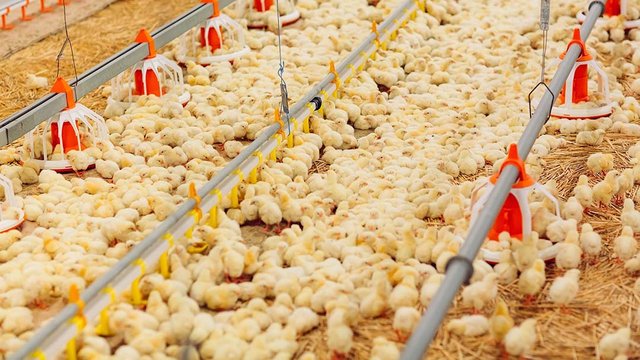Smart broiler raising

Broilers grow fast. And so do the costs. You can have the perfect feed, high-quality ventilation and good lighting, but lose thousands of hryvnias simply because of the feeder: the wrong shape, the wrong height, the wrong placement.
We have collected practical tips from VADA engineers that help poultry farms to save money: without additional investments, without complex automation, but only thanks to the right feeding solutions.
The shape of the feeder saves feed
Often on a poultry farm, you can encounter feed overruns. Farmers attribute this to the bird's good appetite, but it is usually due to the shape of the feeder. As practice shows, most of the feed is scattered from shallow round pallets without a rim. Accordingly, it is better to install feeders with a deep tray and an anti-shedding rim. Feeders with petal baffles work well for the start-up period, as they limit the movement of chickens and reduce losses.
The height of the feeder should be changed
This is a simple recommendation, but in practice it is not always implemented in time. A feeder that is set too low provokes broilers to rummage through and scatter feed, and a feeder that is set too high means that the birds will not finish eating. Where should the “golden mean” be? The edge of the feeder should be at the level of the broiler's back, not the chest or neck. "The most common mistake is the height of the feeders. It may sound trivial, but if you don't raise the feeder with the growth of the broiler, you lose feed and money. I've seen farms where losses reached 8% of feed per cycle," says Oleksii Yurchenko, an engineer at VADA.
"It turns out that the feeder affects not only the availability of feed, but also humidity and air circulation. According to the expert, if the feeders are tightly assembled in one sector, moisture from the litter increases locally, and this creates foci of increased ammonia, especially in case of poor ventilation. Therefore, place the feeding lines no closer than 50 cm from the side walls and do not create “dead zones” where ventilation is poor and the poultry is massively concentrated.
Plastic or metal?
It's no secret that plastic feeders are more affordable, lighter, and don't get hot in the sun, but they also wear out faster. Metal ones last longer, especially on automatic lines, but are also more expensive. Of course, the choice is yours. But before you make a decision, you should consider the scale of production, the type of poultry house, the cleaning system, and the level of humidity in it. For small farms, high-quality plastic is suitable, but in industrial environments, it is better not to skimp on durability - otherwise, cheap can quickly become expensive.
And finally, a piece of advice from a VADA expert: "Don't buy equipment without a project. And especially don't expect that just pouring feed will be enough. It's better to set up a feeding system once than to adjust to it for 5 years."
